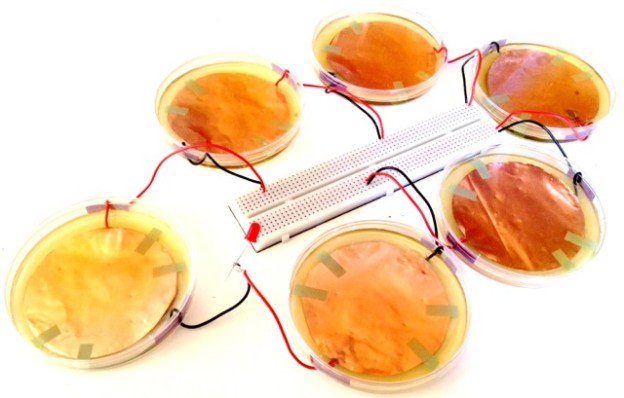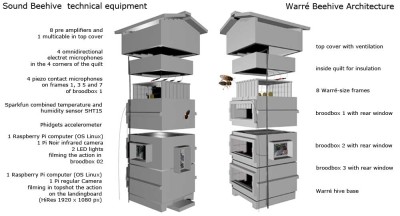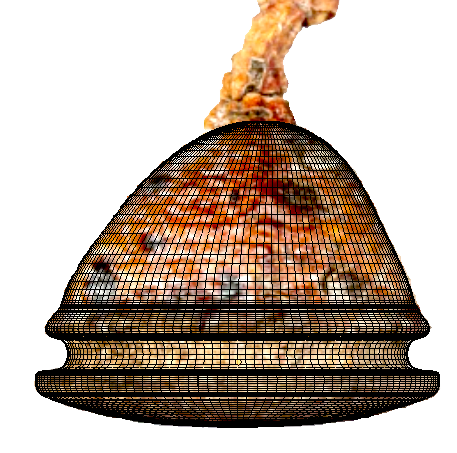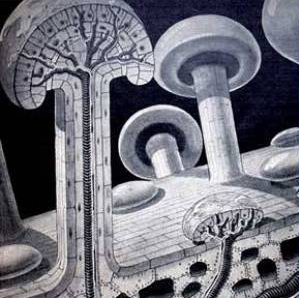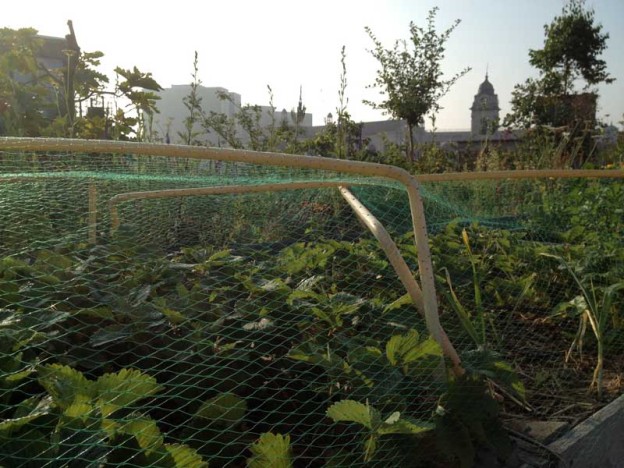Vincent was preparing the audio for the sound beehive: 4 electrets microphones and 4 piezo microphones with preamps mounted in the rooftop of the Warré beehive. We’ve put the charger for the preamps a couple of meters away from the hive, to avoid all EMF and to be as less intrusive as possible.
Our initial intention is to install the Asus computer (with debian) and a Mackie mixing panel. Later we decide to swap that setup for a more performative one: an 8 channel Prosonus soundcard, the Asus with Debian for recording and sending the files over the network to a NAS (network attached storage) hard disk.
We will record 4 times 3 minutes an hour, every :00, :15, :30 and :45. The 8-channel files will be archived via the computer & network on the NAS, the computer then compiles the .wav files into a stero mp3 and a selection of the most recent files will be streamed to the OKNO server for broadcast.

Vincent is installing the Prosunus soundcard and the Asus/Linus computer. He wrote a script to record every 15 minutes 3 minutes of sound on 8 channels. This makes 12 minutes on 8 channels per hour. The recorded files are send to the NAS (storage HD) in my studio. The last 8 files are compiled into a stereo mp3 and uploaded on the Okno server as a playlist. We are now testing the system during a few days, before the bees arrive.
The bash script makes it possible to manage the recordings from a distance, online. Which canals, how many times, etc… everything is modular. But the goal is to automate the system once we are sure about the perfect setup.
The bash scrip at server-side controls the recordings on regular intervals, the bash-script on client side synchronises the playlist of the last 30 minutes of recordings. There is also an online archive that can be consulted.
The computer needs to be powerful enough to record 8 channels simultenuously, and as well compile into mp3 format and stream the playlist.
Cables, connectors, piezo’s and electrets: all the connectors to the preamps are located in the roof, above the upper box. Thje multicable (8 microphones!) is 10 meters long and comes out of the opening at the side of the rooftop. The length of the cable is of no importance thanks to the preamps in the rooftop. Everything is water resistant.
All technology in the hive is on DC, so there is no EMF danger for the bees.
The electrets microphones are also located in the rooftop, as such the bees won’t cover them with propolis. The cinch connectors are located on the topbars of the highest box (no other possibility) – hopefully the bees will not damage them with propolis.

